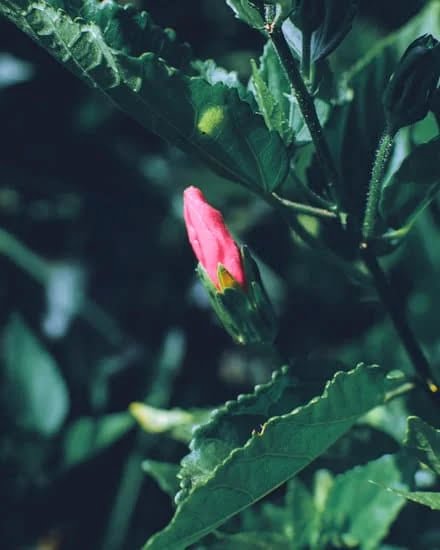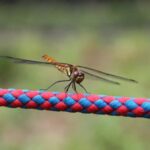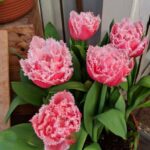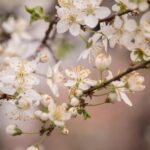A small front yard may present a unique set of challenges, but with the right approach, it can also be a space bursting with potential. In this article, we will explore small front yard landscaping ideas to make the most out of limited space. From selecting the right plants to incorporating creative hardscaping and vertical gardening, there are numerous ways to enhance the aesthetic appeal and functionality of a small front yard.
Assessing the available space is crucial when it comes to landscaping a small front yard. Understanding its unique challenges and opportunities will guide the design process and help maximize every inch of the area. By choosing low-maintenance, space-saving flora and incorporating pathways, patios, and other features strategically, one can create an inviting outdoor space that complements the home’s facade.
In addition to plants and hardscaping elements, lighting, water features, and accessories can play a significant role in transforming a small front yard into an oasis. Whether it’s adding decorative lighting for ambiance or incorporating a small-scale fountain for tranquility, these details can enhance the overall appeal of the space.
With practical tips for maintenance and upkeep, keeping a small front yard looking its best with minimal effort becomes achievable. Let’s delve into the world of small front yard landscaping ideas and unlock the potential of these compact outdoor spaces.
Assessing the Space
When it comes to small front yard landscaping ideas, it’s important to first assess the space available and understand the unique challenges and opportunities that come with it. A small front yard may seem limiting, but with the right approach, it can be transformed into a beautiful and inviting outdoor space. Here are some key considerations when assessing the potential of a small front yard:
- Size and shape: Measure the dimensions of the yard and take note of any irregular shapes or features that may impact your design.
- Sunlight exposure: Observe how much sunlight the yard receives throughout the day, as this will influence your choice of plants and hardscaping elements.
- Existing features: Take stock of any existing landscaping, trees, or structures that you want to incorporate into your design or work around.
In addition to these considerations, it’s important to think about how you want to use the space. Do you want a cozy sitting area, a pathway for guests to walk through, or a focal point like a water feature? Understanding how you intend to use the small front yard will help guide your design decisions.
With thoughtful assessment and planning, a small front yard can become an oasis of beauty and functionality. By taking into account the unique challenges and opportunities presented by limited space, you can create a stunning outdoor area that enhances your home’s curb appeal while also providing a welcoming outdoor environment for you and your guests.
Choosing the Right Plants
When it comes to small front yard landscaping ideas, choosing the right plants is crucial to maximizing space and minimizing maintenance. In a limited area, it’s important to select low-maintenance, space-saving flora that will thrive in the available conditions. By carefully considering the unique needs and opportunities of a small front yard, homeowners can create a beautiful and functional outdoor space.
Understanding the Microclimate
Before selecting plants for a small front yard, it’s essential to understand the microclimate of the area. Factors such as sun exposure, soil type, and moisture levels will impact which plants will thrive. For example, if the front yard receives ample sunlight, drought-tolerant plants such as lavender or succulents may be suitable. On the other hand, if the space is mostly shaded, ferns and hostas could be better options.
Choosing Compact Varieties
In a small front yard, space-saving plants are essential to prevent overcrowding and maintain an open feel. Compact varieties of popular shrubs and flowers are available in most nurseries and can help create a lush landscape without overwhelming limited space. Additionally, selecting dwarf trees or columnar evergreens can provide height and visual interest without taking up excessive room.
Considering Year-Round Appeal
When choosing plants for a small front yard, it’s important to consider year-round appeal. Selecting a mix of evergreen and deciduous plants ensures that the landscape remains vibrant throughout all seasons. Incorporating flowering perennials or ornamental grasses can also add pops of color in spring and summer while maintaining visual interest during colder months.
By carefully considering factors such as microclimate, compact varieties, and year-round appeal, homeowners can select the right plants to enhance their small front yard landscaping with minimal maintenance requirements. This thoughtful approach will result in a beautiful outdoor space that maximizes its potential while minimizing upkeep demands.
Creative Hardscaping
Optimizing Pathways
One of the key elements of creative hardscaping in small front yard landscaping is the use of pathways. These can be designed to not only lead visitors to the entrance but also to visually expand the space by creating diagonal lines or gentle curves. Laying down pavers or stepping stones in a creative pattern can add visual interest while maximizing usable space. Additionally, choosing lighter-colored materials for pathways can give an illusion of a larger area.
Creating Functional Patios
Incorporating a small patio or seating area is another way to make a small front yard more inviting and usable. Utilizing smaller-scale furniture and space-saving techniques such as built-in seating or fold-down tables can help maximize the available space without sacrificing comfort. Whether it’s for enjoying morning coffee or entertaining guests, a well-designed patio adds both function and aesthetic appeal to a small front yard.
Adding Other Features
Aside from pathways and patios, other hardscaping features such as raised planters, built-in benches, or decorative retaining walls can be integrated into the small front yard landscape. These elements not only serve practical purposes but also contribute to the overall design scheme. Choosing materials that complement the architecture of the home while keeping the scale appropriate for a compact space is crucial in achieving a cohesive look.
By thoughtfully integrating pathways, patios, and other hardscaping features into a small front yard landscape design, homeowners can create an outdoor space that is both aesthetically pleasing and functional.
Vertical Gardening
When dealing with a small front yard, it’s essential to make the most of every inch of space available. One effective way to add greenery while maximizing space is through vertical gardening. By utilizing walls, trellises, and other vertical structures, homeowners can create an eye-catching and lush landscape without sacrificing valuable ground space.
To incorporate vertical gardening into a small front yard landscaping design, consider the following options:
- Hanging baskets: Utilize the vertical space on porches or walls by hanging baskets filled with colorful flowers or trailing vines.
- Trellises: Install trellises against fences or walls to support climbing plants like roses, clematis, or morning glories.
- Living walls: Create a stunning focal point by installing a living wall planter system where plants are grown vertically.
- Vertical garden towers: Utilize freestanding structures like garden towers or plant stands to showcase a variety of plants in a small footprint.
Additionally, implementing vertical gardening can also help screen unsightly views or provide privacy in the small front yard. By carefully selecting suitable plants for each vertical structure, homeowners can create an inviting and visually appealing space that maximizes their small front yard’s potential.
Lighting and Accessories
When it comes to small front yard landscaping ideas, one key aspect to consider is how to enhance the overall ambiance and functionality of the space. Strategic lighting and decorative elements can play a significant role in transforming a small front yard into a welcoming and visually appealing area. By carefully selecting the right lighting fixtures and accessories, homeowners can create an inviting atmosphere while also adding practical functionality to their outdoor space.
One effective way to elevate the aesthetics of a small front yard is by incorporating various types of lighting. Whether it’s pathway lights, spotlights, or string lights, proper illumination can highlight key features of the landscape while also improving visibility during evening hours. Additionally, well-placed lighting can create a warm and cozy ambiance that makes the small front yard feel more spacious and inviting.
In addition to lighting, decorative elements such as sculptures, outdoor artwork, or colorful planters can add personality and charm to a small front yard. These accessories not only serve as focal points but also help to tie together the overall design scheme. By carefully selecting and placing these items, homeowners can infuse their personal style into the landscape while maximizing the use of limited space.
| Category | Example |
|---|---|
| Pathway Lights | Solar-powered LED path lights |
| Spotlights | Adjustable LED floodlights for highlighting plants or architectural features |
| String Lights | Festive cafe-style string lights for creating an inviting ambiance |
| Decorative Elements | Metal garden sculptures or colorful ceramic planters |
Water Features
Incorporating water features into a small front yard can add a sense of tranquility and beauty to the space. Small-scale fountains, ponds, or other water elements can create a peaceful atmosphere and provide a focal point for the landscaping. When considering adding a water feature to a small front yard, it’s important to carefully assess the available space and choose elements that will complement the overall design.
One option for incorporating water into a small front yard is to use a tabletop fountain or bubbling urn. These compact features can add the soothing sound of flowing water without taking up much space.
Another possibility is to create a small pond using a pre-formed liner or container. A pond can attract wildlife and bring an element of nature to the front yard, but it’s important to ensure that it is properly scaled to fit the available area.
When adding any type of water feature to a small front yard, maintenance considerations are crucial. It’s essential to balance the desire for beauty with practicality, choosing elements that are easy to maintain while still creating an inviting outdoor environment.
Additionally, ensuring that proper safety measures are in place is important when installing any type of water feature, especially in a small space where they may be more accessible. Careful planning and consideration of these factors can help maximize the benefits of incorporating water elements into small front yard landscaping.
| Small Water Feature | Benefits |
|---|---|
| Tabletop fountain or bubbling urn | Adds soothing sound without taking up much space |
| Small pond using pre-formed liner or container | Attracts wildlife and brings nature into the front yard |
Maintenance and Upkeep
In conclusion, creating an inviting and charming small front yard can be a rewarding experience with the right approach. Understanding the unique challenges and opportunities of a limited space is crucial in achieving a beautiful and functional landscape. By selecting low-maintenance, space-saving plants, incorporating creative hardscaping features, utilizing vertical gardening techniques, enhancing with strategic lighting and accessories, and possibly adding small-scale water features, homeowners can transform their small front yards into delightful outdoor spaces.
It’s important to remember that keeping a small front yard looking its best doesn’t have to be a time-consuming task. With some practical tips for maintenance and upkeep, such as regularly pruning and weeding, proper watering practices, and seasonal clean-ups, homeowners can ensure their landscaping continues to thrive with minimal effort. Additionally, taking the time to invest in quality soil and fertilizers can help promote healthy plant growth while reducing the need for constant attention.
Ultimately, the key to successful small front yard landscaping lies in thoughtful planning and careful consideration of the available space. By implementing these ideas and tips, homeowners can create a picturesque front yard that not only reflects their personal style but also enhances the overall curb appeal of their property. Small front yard landscaping ideas have the potential to make a big impact when executed thoughtfully and maintained properly.
Frequently Asked Questions
How Can I Make My Small Front Yard Look Nice?
There are several ways to make a small front yard look nice without breaking the bank. Planting colorful flowers and plants can add visual appeal, while adding mulch or gravel paths can create definition and depth.
Incorporating small garden ornaments or decorative pots can also add charm to the space. Additionally, maintaining a neat and tidy appearance by regularly mowing the lawn, trimming hedges, and keeping walkways clear of debris can go a long way in improving the overall look of the front yard.
What Is the Cheapest Landscape Fill?
One of the cheapest landscape fills that you can consider is using mulch. Mulch not only helps with weed control and moisture retention in the soil, but it also adds texture and color to your landscaping.
Another affordable option is using pea gravel or crushed stone to fill larger areas where grass may not grow well. These materials are relatively inexpensive and can be a cost-effective way to enhance the overall look of your yard.
How Can I Make My Yard Beautiful on a Budget?
Making your yard beautiful on a budget is definitely possible with some strategic planning. Consider dividing your yard into separate spaces or creating designated areas for different purposes, such as dining, entertaining, or relaxation. This allows you to focus on improving specific sections at a time without feeling overwhelmed by the entire space.
Additionally, opting for low-maintenance plants and incorporating native species can help save on maintenance costs over time. Finally, repurposing existing materials or shopping for secondhand outdoor furniture/decorations can also help minimize expenses while still achieving an attractive and functional yard.

Welcome to my gardening blog! I am passionate about plants and enjoy sharing my knowledge and experiences with others. In this blog, I will write about everything related to gardening, from tips on how to get started to updates on my own garden projects.





